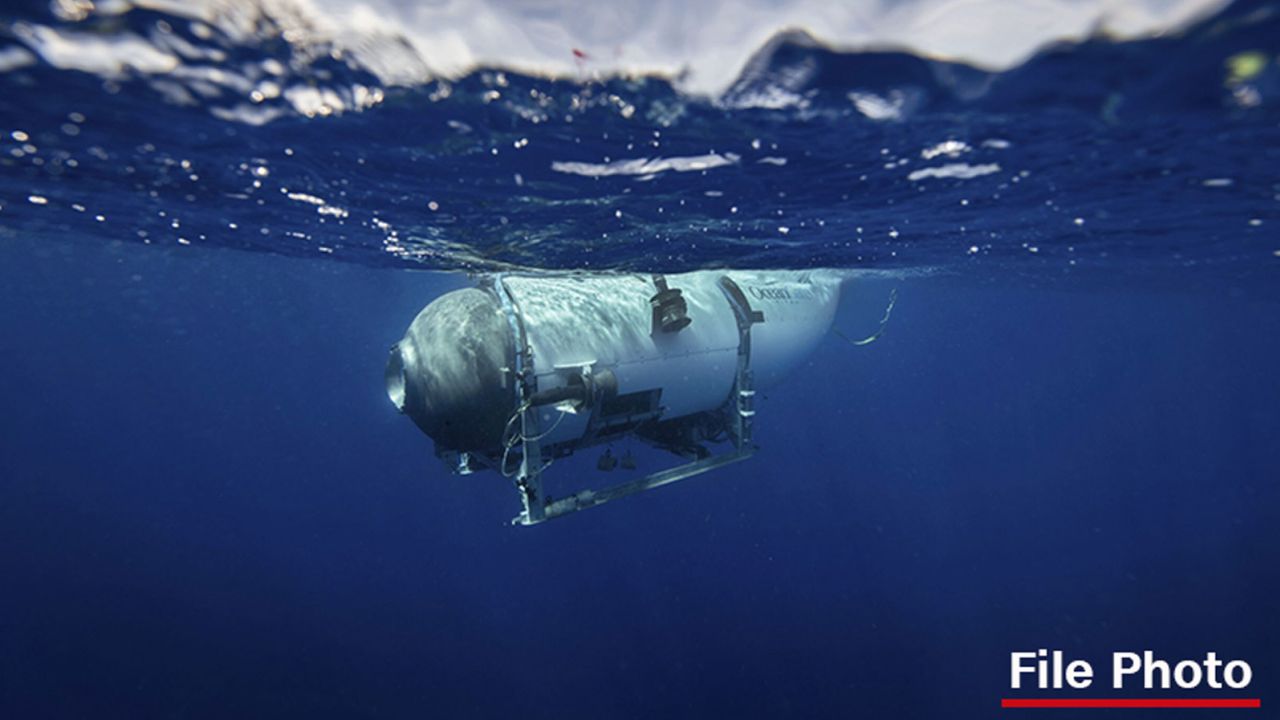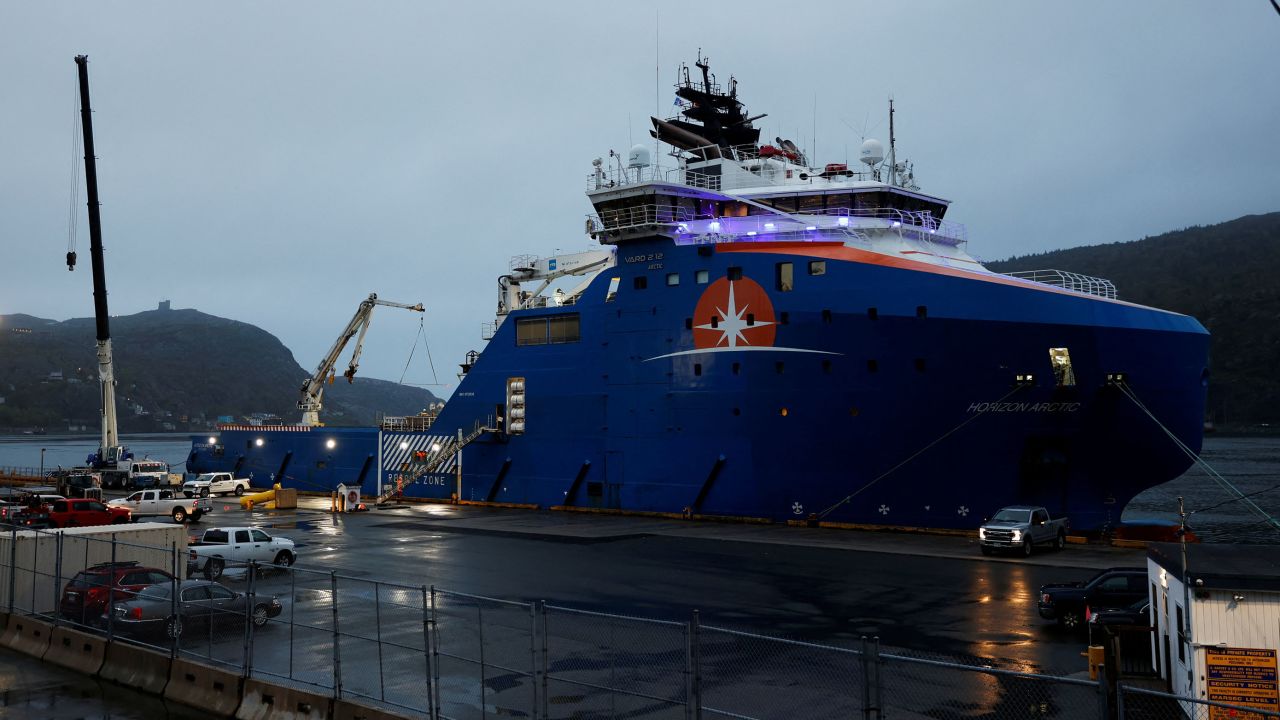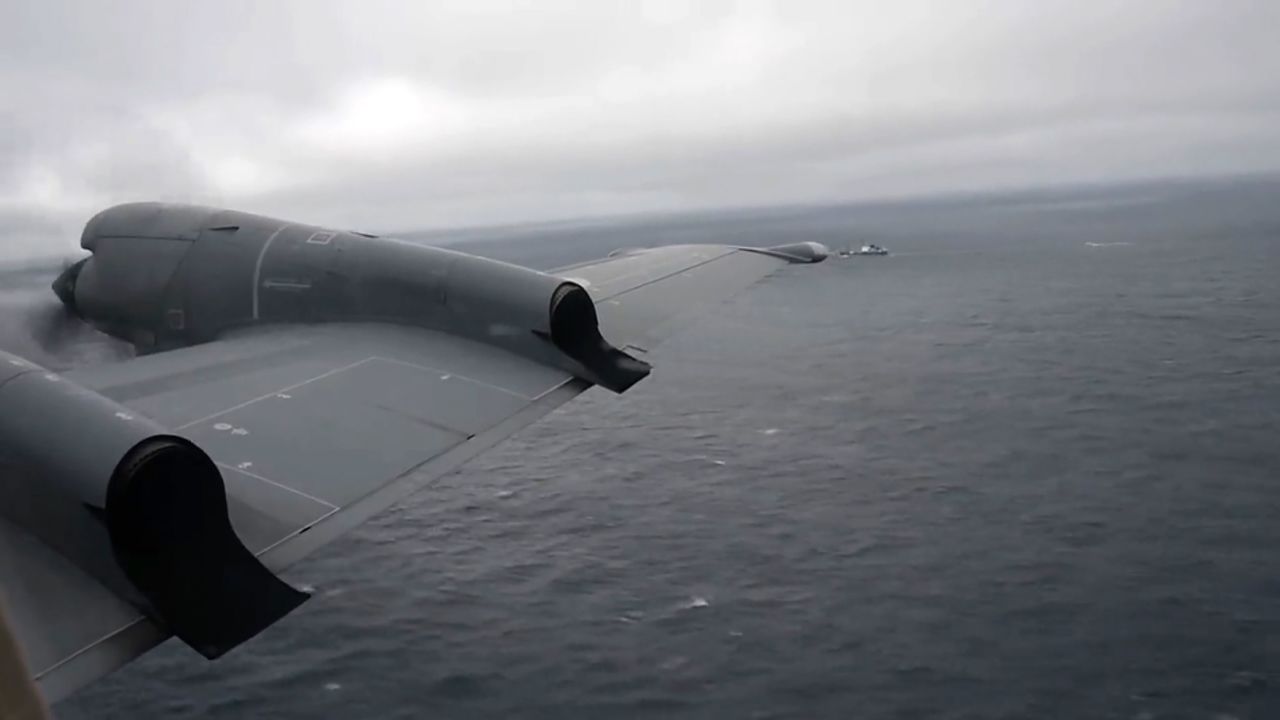The number of assets in the search operation is expected to double in the next day or two, Frederick said Wednesday. A Canadian Coast Guard boat with sonar capabilities, the John Cabot, arrived Wednesday, and the US Navy is sending a lift system that can pull heavy objects up from 20,000 feet deep to help if the submersible is found.
“The Coast Guard has done a very good job in putting the right tools with the right team in the right spot. So, the chances are as good as they can be,” Gallo, the senior adviser for strategic initiatives at RMS Titanic Inc., told CNN on Thursday morning.
“It’s tough because the oceans are pitch black, you can only use sound to image effectively, and you’ve got to be pretty much on top of the object to actually see it,” he added.
Environmental factors in the ocean are likely complicating efforts to identify the noises, said Rick Murcar, the international training director for the National Association of Cave Divers. Currents can deflect the sound so it appears it’s coming from miles away from its source, Murcar explained, likening the effort to locate the noise to trying to pinpoint a snare drum in a stadium full of cheering fans and other instruments.
If the submersible is found at depth, it would take a while to bring it to the surface, and there won’t be a way to get oxygen into it, said ocean explorer Tom Dettweiler, who was part of the expedition that discovered the Titanic wreckage in 1985.
“The thing to do would be to bring it up as quickly as possible and open the hatch and get to the people. Unfortunately, it cannot be brought up all that quickly when it is on the end of a cable and dependent on the speed of a winch to bring it up,” he told CNN. “You’re still talking about hours, potentially, to get it up.”
Harsh conditions on the submersible

As aircraft, ships, sonar buoys and robots comb through the ocean, experts warn conditions are likely dire aboard the 23,000-pound submersible – especially if it’s still deep underwater.
Ret. Navy Capt. David Marquet, a former submarine captain, described Wednesday what he imagines the five passengers are experiencing in the Titan beyond hunger, thirst and discomfort.
“They’re freezing cold. The water entirely surrounding the ship is at freezing or slightly below. When they exhale, their breath condenses. There’s frost on the inside of the parts of the submarine,” Marquet told CNN’s Jake Tapper. “They’re all huddled together trying to conserve their body heat. They’re running low on oxygen and they’re exhaling carbon dioxide.”
The submersible has a “limited ability” to absorb the exhaled carbon dioxide, which at high levels could trigger headaches, confusion and nausea, Marquet said. “The oxygen and the carbon dioxide and the freezing are what they got to hold onto as long as possible to give the rescuers the time they need.”
Those onboard will need to conserve energy, said Joe MacInnis, a physician and renowned diver who’s made two trips to the Titanic wreck.
“Resting, breathing as little as possible, and trying to keep calm – that is the most important thing,” he told CNN early Wednesday.
Per Wimmer, an adventurer and acquaintance of Harding and Rush, said he believed they would know to conserve oxygen.
“I still have hope,” Wimmer said on “CNN This Morning.” “I remain optimistic, positive, and hoping for a miracle here, at least until it’s proven otherwise.”
Indeed, “issues with computer control” were among the reasons Discovery Channel’s “Expedition Unknown” host Josh Gates and his team decided after a 2021 test dive of Titan against filming a segment on the vessel as it “became clear to us at that time that there was a lot that needed to be worked out with the sub,” he said.
“A lot of the systems worked but a lot of them really didn’t. We had issues with thrusters and issues with computer control and things like that. Ultimately, it was a challenging dive,” Gates told CNN’s Anderson Cooper Wednesday.
“We were inside Titan for two or three hours, and there were a lot of things that weren’t really ready for prime time, it seemed,” he said, adding he couldn’t get comfortable with the Titan at that time.
OceanGate declined safety review of Titan submersible, industry leader says

The disappearance of Titan and the international dash to find it have put its operator under the microscope.
At least two former OceanGate employees years ago expressed safety concerns about the vessel’s hull, including the thickness of the material used and testing procedures, CNN has learned. The 23,000-pound craft is made of highly engineered carbon fiber and titanium.
The company also faced a series of mechanical problems and inclement weather conditions that forced the cancellation or delays of trips in recent years, according to court records. The scuttled excursions led to a pair of lawsuits in which some high-paying customers sought to recoup the cost of trips they said they didn’t take. The complaints alleged that the company overstated its ability to reach the Titanic wreckage.
OceanGate did not respond to the claims in court and could not be reached for comment.
Some expeditions were delayed after OceanGate was forced to rebuild the Titan’s hull because it showed “cyclic fatigue” and wouldn’t be able to travel deep enough to reach the Titanic’s wreckage, according to a 2020 article by GeekWire, which interviewed the company’s CEO.
CNN’s Rob Frehse, Oren Liebermann, Laura Ly, Kristina Sgueglia, Greg Wallace, Paul P. Murphy, Curt Devine and Isabelle Chapman contributed to this report.












